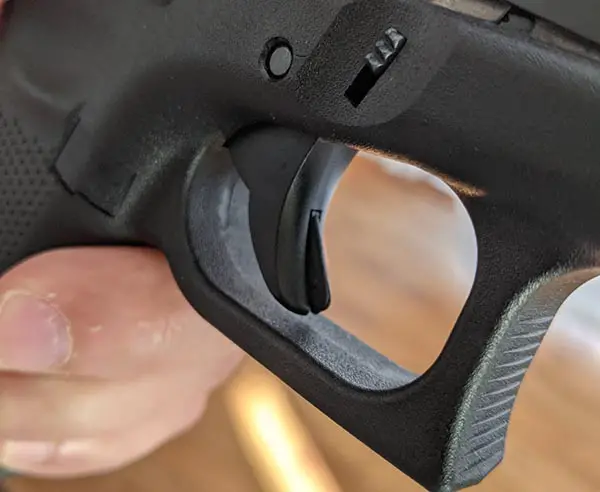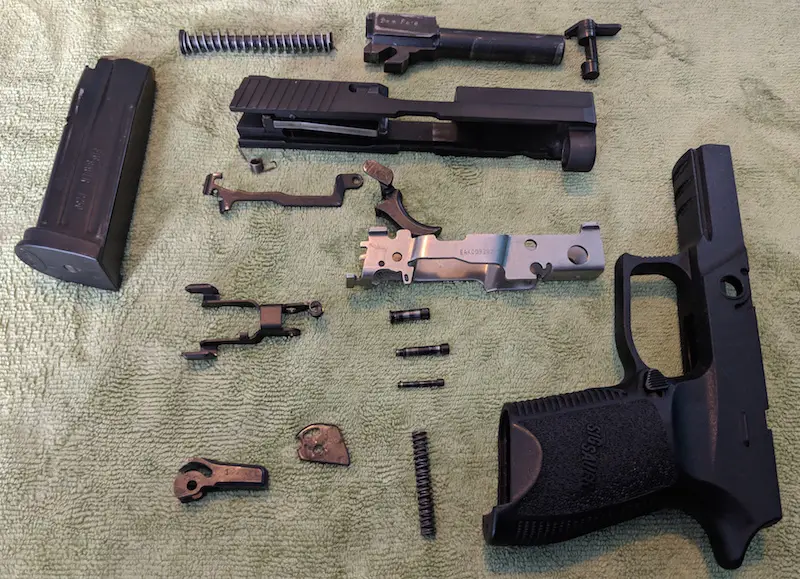If you want to shoot accurately, you need to understand the difference between pulling and squeezing the trigger. Squeezing the trigger aids in maintaining proper sight alignment and sight picture through the trigger break. Contrarily, pulling the trigger results in the loss of these key aspects of aiming and impacts shot placement.
Table of Contents
Is It Hard To Pull The Trigger On A Gun?
First, lets talk about the mechanics of a gun, and some of the misconceptions. Some new shooters mistakenly believe that raw strength is required to accurately grip and shoot a gun. Furthermore, many beginners also believe that the force required to operate the trigger is far greater than is actually necessary
In reality, it is not hard at all to “pull” the trigger on a gun. The pounds of pressure required to manipulate the trigger — trigger pull weight — is surprisingly small and generally ranges from 1.5 to 8 lbs. According to the NRA website, trigger pull weight varies by trigger type.
Now, the mechanics of mastering your trigger control are another story entirely. Mastering trigger control takes time and dedication. In that regard, “pulling” the trigger is no easy task.
What Does It Mean To Squeeze The Trigger?
So what does it mean to squeeze the trigger? Squeezing the trigger is a far less abrupt way of applying pressure to the trigger and allows for steady and constant application of force.
Equal and steady application of force on the trigger means that you minimize movement of the gun. Minimal movement means better sight alignment and picture. When squeezing the trigger, movement and force should be isolated to the trigger finger.
However, some shooters take squeezing the trigger too far. Instead of squeezing the trigger with their finger, they squeeze the gun with their whole hand instead. Squeezing the whole hand when shooting is sometimes referred to as milking and oftentimes leads to shot groups low and to the left.
How Squeezing & Pulling A Trigger Are Different
Now that you know what squeezing the trigger means, what does pulling the trigger mean? And, more importantly how does it affect shot placement?
When you pull a trigger you are applying force unequally to the trigger and grip of the firearm, which leads to a host of problems. Ultimately this will disrupt your sight alignment, sight picture, or both.
Generally, a trigger pull is characterized by abnormal accelerated movement or pressure by the trigger finger when firing a shot. Sometimes this can lead to other unintended consequences on your grip.
Pulling the trigger aggressively (also known as jerking the trigger) can cause the muzzle to rise which will lead to high shot placement.
What About Trigger Press?
Trigger press is another term floating around where trigger control is discussed but the term is sometimes confusing to new shooters. Generally, we press away from our bodies. But, when manipulating the trigger it actually moves toward the shooter.
Now, I believe the term trigger press does communicate the need to isolate pressure to the trigger finger. Additionally, the act of pressing something is less aggressive and therefore also aptly describes the application of force when operating the trigger.
Parting Shots
Ultimately your choice in vocabulary is less important than the intent of your words. Functionally, when you operate the trigger on a gun you should strive to maintain equal pressure in your grip. Additionally, your trigger finger should manipulate the trigger with constant pressure to allow for steady travel in your trigger.
Do you have a dissenting opinion about which term is correct? Where you taught different? If you’ve found this content helpful then please share it with your network or leave a comment.








